
A flag is a piece of fabric with a distinctive design and colours. It is used as a symbol, a signalling device, or for decoration. The term flag is also used to refer to the graphic design employed, and flags have evolved into a general tool for rudimentary signalling and identification, especially in environments where communication is challenging. The study of flags is known as "vexillology" from the Latin vexillum, meaning "flag" or "banner".
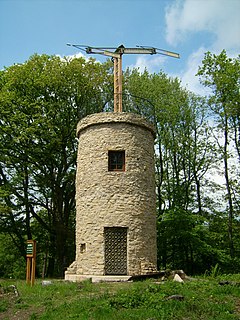
Telegraphy is the long-distance transmission of textual or symbolic messages without the physical exchange of an object bearing the message. Thus semaphore is a method of telegraphy, whereas pigeon post is not.
Tactical communications are military communications in which information of any kind, especially orders and military intelligence, are conveyed from one command, person, or place to another upon a battlefield, particularly during the conduct of combat. It includes any kind of delivery of information, whether verbal, written, visual or auditory, and can be sent in a variety of ways. In modern times, this is usually done by electronic means. Tactical communications do not include communications provided to tactical forces by the Defense Communications System to non-tactical military commands, to tactical forces by civil organizations, nor does it include strategic communication.
The Q code is a standardized collection of three-letter codes all of which start with the letter "Q". It is an operating signal initially developed for commercial radiotelegraph communication and later adopted by other radio services, especially amateur radio. To distinguish the use of "Q" codes transmitted as questions from those transmitted as statements, operators used the Morse question "INT" as a prefix to the "Q" code.

A semaphore telegraph is an early system of conveying information by means of visual signals, using towers with pivoting shutters, also known as blades or paddles. Information is encoded by the position of the mechanical elements; it is read when the shutter is in a fixed position. The most widely used system was invented in 1792 in France by Claude Chappe, and was popular in the late eighteenth to early nineteenth centuries. Lines of relay towers with a semaphore rig at the top were built within line-of-sight of each other, at separations of 5–20 miles (8.0–32.2 km). Operators at each tower would watch the neighboring tower through a spyglass, and when the semaphore arms began to move spelling out a message, they would pass the message on to the next tower. This system was much faster than post riders for conveying a message over long distances, and also had cheaper long-term operating costs, once constructed. Semaphore lines were a precursor of the electrical telegraph, which would replace them half a century later, and would also be cheaper, faster, and more private. The line-of-sight distance between relay stations was limited by geography and weather, and prevented the optical telegraph from crossing wide expanses of water, unless a convenient island could be used for a relay station. Modern derivatives of the semaphore system include flag semaphore and the heliograph.
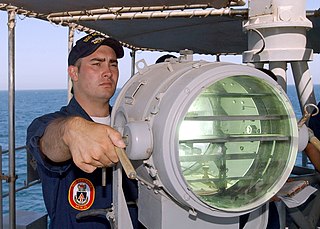
Optical communication, also known as optical telecommunication, is communication at a distance using light to carry information. It can be performed visually or by using electronic devices. The earliest basic forms of optical communication date back several millennia, while the earliest electrical device created to do so was the photophone, invented in 1880.
Pulse-position modulation (PPM) is a form of signal modulation in which M message bits are encoded by transmitting a single pulse in one of possible required time shifts. This is repeated every T seconds, such that the transmitted bit rate is bits per second. It is primarily useful for optical communications systems, which tend to have little or no multipath interference.
A distress signal, also known as a distress call, is an internationally recognized means for obtaining help. Distress signals are communicated by transmitting radio signals, displaying a visually observable item or illumination, or making a sound audible from a distance.

International maritime signal flags are various flags used to communicate with ships. The principal system of flags and associated codes is the International Code of Signals. Various navies have flag systems with additional flags and codes, and other flags are used in special uses, or have historical significance.

"England expects that every man will do his duty" was a signal sent by Vice Admiral of the Royal Navy, Horatio Nelson, 1st Viscount Nelson, from his flagship HMS Victory as the Battle of Trafalgar was about to commence on 21 October 1805. Trafalgar was a decisive naval engagement of the Napoleonic Wars. It gave the United Kingdom control of the seas, removing all possibility of a French invasion and conquest of Britain. Although there was much confusion surrounding the wording of the signal in the aftermath of the battle, the significance of the victory and Nelson's death during the battle led to the phrase becoming embedded in the English psyche, and it has been regularly quoted, paraphrased and referenced up to the modern day.
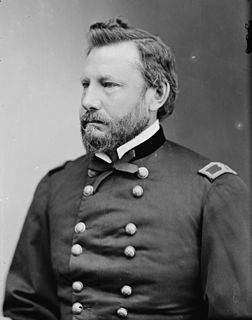
Albert James Myer was a surgeon and United States Army general. He is known as the father of the U.S. Army Signal Corps, as its first chief signal officer just prior to the American Civil War, the inventor of wig-wag signaling , and also as the father of the U.S. Weather Bureau.
Flag signals can mean any of various methods of using flags or pennants to send signals. Flags may have individual significance as signals, or two or more flags may be manipulated so that their relative positions convey symbols. Flag signals allowed communication at a distance before the invention of radio and are still used especially in connection with ships.
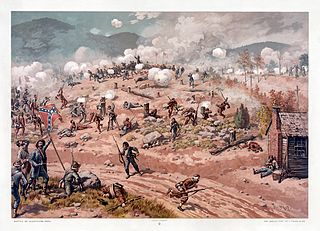
The Battle of Allatoona, also known as the Battle of Allatoona Pass, was fought October 5, 1864, in Bartow County, Georgia, and was the first major engagement of the Franklin-Nashville Campaign of the American Civil War. A Confederate division under Maj. Gen. Samuel G. French attacked a Union garrison under Brig. Gen. John M. Corse, but was unable to dislodge it from its fortified position protecting the railroad through Allatoona Pass.
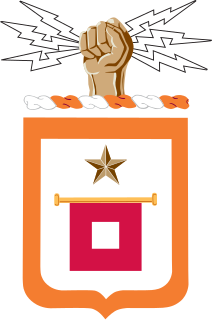
The United States Army Signal Corps (USASC) is a division of the Department of the Army that creates and manages communications and information systems for the command and control of combined arms forces. It was established in 1860, the brainchild of Major Albert J. Myer, and had an important role in the American Civil War. Over its history, it had the initial responsibility for portfolios and new technologies that were eventually transferred to other U.S. government entities. Such responsibilities included military intelligence, weather forecasting, and aviation.

Military communications or military signals involve all aspects of communications, or conveyance of information, by armed forces. Military communications span from pre-history to the present. The earliest military communications were delivered by runners. Later, communications progressed to visual and audible signals, and then advanced into the electronic age. Examples from Jane's Military Communications include text, audio, facsimile, tactical ground-based communications, terrestrial microwave, tropospheric scatter, naval, satellite communications systems and equipment, surveillance and signal analysis, encryption and security and direction-finding and jamming.
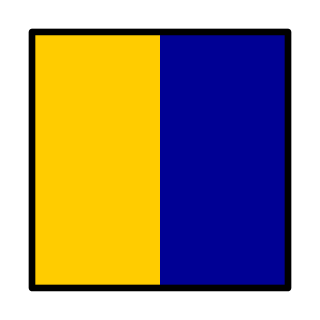
The International Code of Signals (ICS) is an international system of signals and codes for use by vessels to communicate important messages regarding safety of navigation and related matters. Signals can be sent by flaghoist, signal lamp ("blinker"), flag semaphore, radiotelegraphy, and radiotelephony. The International Code is the most recent evolution of a wide variety of maritime flag signalling systems.

The Signal Corps in the American Civil War comprised two organizations: the U.S. Army Signal Corps, which began with the appointment of Major Albert J. Myer as its first signal officer just before the war and remains an entity to this day, and the Confederate States Army Signal Corps, a much smaller group of officers and men, using similar organizations and techniques as their Union opponents. Both accomplished tactical and strategic communications for the warring armies, including electromagnetic telegraphy and aerial telegraphy. Although both services had an implicit mission of battlefield observation, intelligence gathering, and artillery fire direction from their elevated signal stations, the Confederate Signal Corps also included an explicit espionage function.
Procedure words or prowords are words or phrases limited to radio telephone procedure used to facilitate communication by conveying information in a condensed standard verbal format. Prowords are voice versions of the much older prosigns for Morse code first developed in the 1860s for Morse telegraphy, and their meaning is identical. The U.S. military communications manual ACP-125 contains the most formal and perhaps earliest modern (post-WW-II) glossary of procedure words, but its definitions have been adopted by many other organizations, including the United Nations Development Programme, the U.S. Coast Guard, the Rhode Island Department of Emergency Management, Civil Air Patrol, Military Auxiliary Radio System, and others.

A hydraulic telegraph is either of two different hydraulic-telegraph telecommunication systems. The earliest one was developed in 4th-century BC Greece, while the other was developed in 19th-century AD Britain. The Greek system was deployed in combination with semaphoric fires, while the latter British system was operated purely by hydraulic fluid pressure.

Flag semaphore is the telegraphy system conveying information at a distance by means of visual signals with hand-held flags, rods, disks, paddles, or occasionally bare or gloved hands. Information is encoded by the position of the flags; it is read when the flag is in a fixed position. Semaphores were adopted and widely used in the maritime world in the 19th century. It is still used during underway replenishment at sea and is acceptable for emergency communication in daylight or using lighted wands instead of flags, at night.
Richard Dees of the Idaho Civil War Volunteers. He is one of the communications officers.














